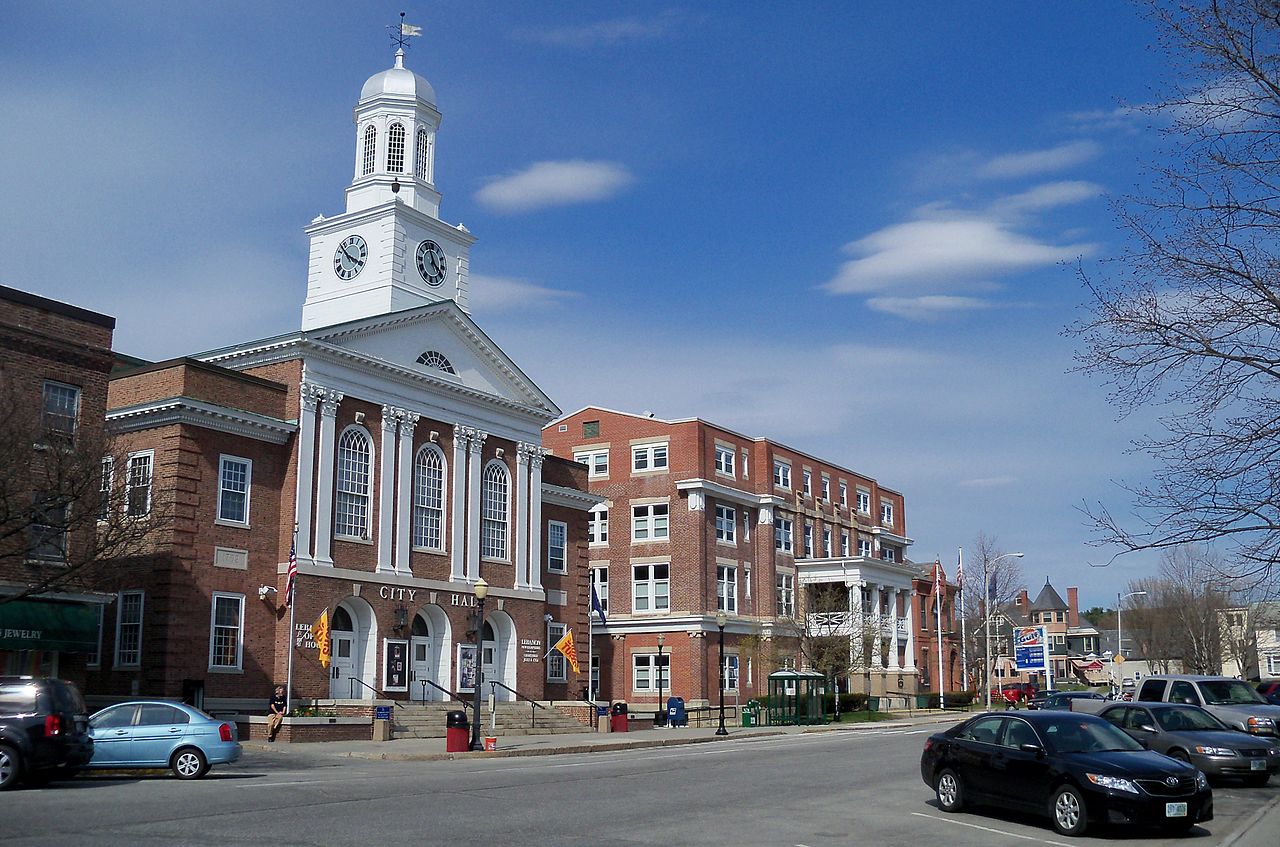Lebanon, NH

Lebanon was chartered as a town by Colonial Governor Benning Wentworth on July 4, 1761, one of 16 along the Connecticut River. It was named for Lebanon, Connecticut, from where many early settlers had come or would come, including the Rev. Eleazar Wheelock, who arrived in 1770 and founded Dartmouth College. Lebanon, Connecticut was the original home of Moor's Indian Charity School, the antecedent of Dartmouth College.
Early settlement concentrated along the Connecticut River in what is now West Lebanon, and along the Mascoma Lake region near Enfield. In the mid-19th century, a mill district developed at falls on the Mascoma River. Industries included, at various times, furniture mills, a tannery, several machine shops, a woolen textile mill and a clothing factory. In the mid-19th century, this district attracted many French workers from Canada's Quebec province. This became the center of town, although West Lebanon grew into a railroad hub with a separate identity after lines entered from Boston. This rail center would become known as Westboro after two trains collided when West Lebanon was mistaken for Lebanon.
The mill district, like the railroad, declined into the 1950s and 1960s. The town suffered two major fires; the second, in 1964, destroyed a large portion of the old mill district. Reconstruction resulted in a controversial urban renewal project featuring a closed-off district, called The Mall, built to replace the destroyed Hanover Street area.
Enfield, NH

The town was incorporated in 1761 by Colonial Governor Benning Wentworth. First named Enfield by settlers from Enfield, Connecticut, the town was renamed Relhan in 1766 to honor Dr. Anthony Relhan (ca. 1715-1776). The doctor was a promoter of sea-bathing as a curative, making Brighton, England, a fashionable resort. Following the American Revolution, the New Hampshire town was renamed Enfield in 1784.
The first European settlers in town were Jonathan Paddleford and family who arrived, after the successful conclusion of the French and Indian War, between 1765 and 1772.
On the southwest shore of Mascoma Lake is Enfield Shaker Village, once a utopian religious community of Shakers, renowned for simple and functional architecture and furniture. Established in 1793 and called Chosen Vale, the village was subdivided into several "Families", with men and women leading pious, celibate and industrious lives. Although the genders shared dormitories, like Enfield's Great Stone Dwelling built between 1837 and 1841, the sexes used separate doors and stairways. They practiced ecstatic singing and dancing, an expression of their worship, which earned them the appellation: Shaking Quakers, or Shakers.
Several trades operated at the village, from agriculture and packaging of seeds, to manufacture of brooms, brushes, spinning-wheels, and furniture. To speed delivery of products to the railroad across Mascoma Lake, in 1849 the community erected Shaker Bridge.
Hartford, VT

Hartford is a New England town in Windsor County in the state of Vermont, in the United States. It is located on the New Hampshire border, at the intersection of Interstates 89 and 91. It is the site of the confluence of the White River and the Connecticut River; the Ottauquechee River also flows through the town.[4] The town is composed of five unincorporated villages: Hartford, Quechee, West Hartford, White River Junction and Wilder. The population was 9,952 at the 2010 census.